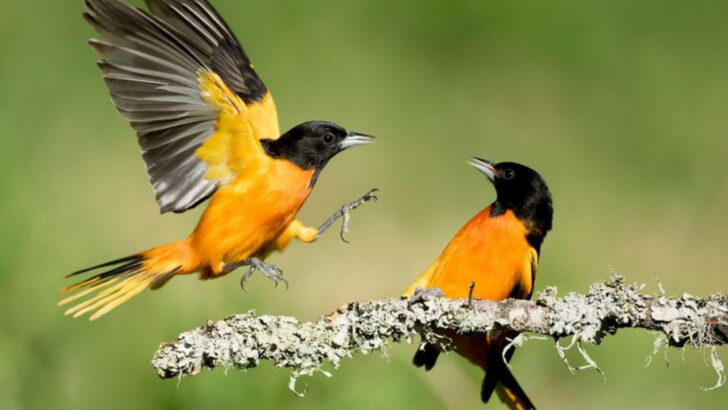Wild birds are mesmerizing. Their vibrant colors, enchanting songs, and graceful flight captivate us from afar. But as much as we love to admire them, they belong in the wild, not behind bars.
While it’s tempting to want a piece of their freedom in our homes, these birds are meant to soar through open skies and live in their natural habitats. Keeping them as pets can strip them of their essence and harm their well-being.
This list highlights 15 friendly wild birds that, while delightful to observe, should never be caged. Let’s celebrate these winged wonders by leaving them in the wild where they truly belong. So, next time you spot one, appreciate its beauty from a distance—but remember, freedom is their true home.
American Robin
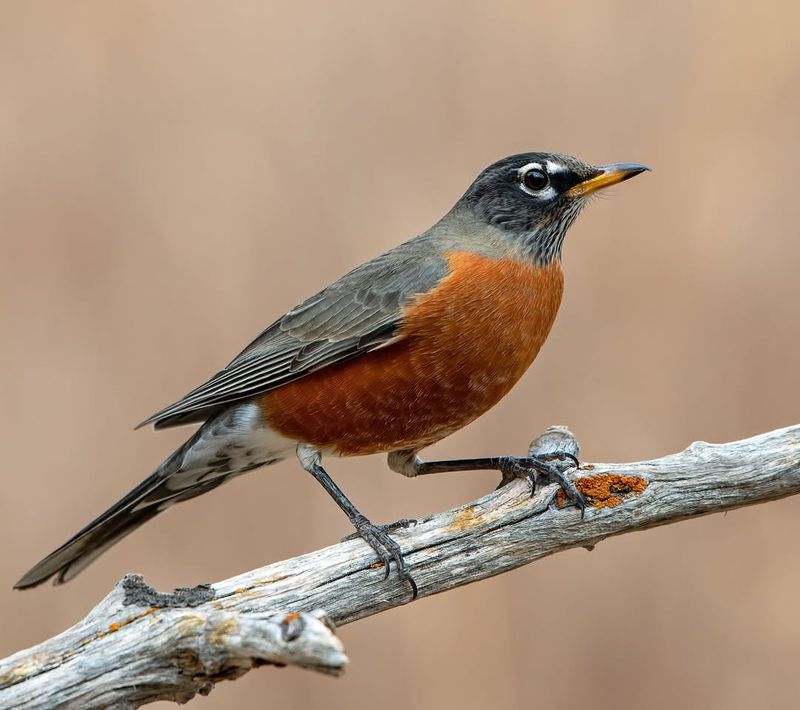
American Robins are known for their delightful presence in backyards across North America. Their distinctive orange breasts and cheerful songs make them a favorite among birdwatchers. These birds thrive in various environments, often seen foraging for earthworms on lawns.
Despite their friendliness, robins require vast territories and specific diets that are hard to replicate in captivity. Observing them in parks or gardens, where they can naturally thrive, allows us to appreciate their true beauty.
Encouraging their presence with fruit-bearing plants is a great way to enjoy these birds without confining them.
European Starling
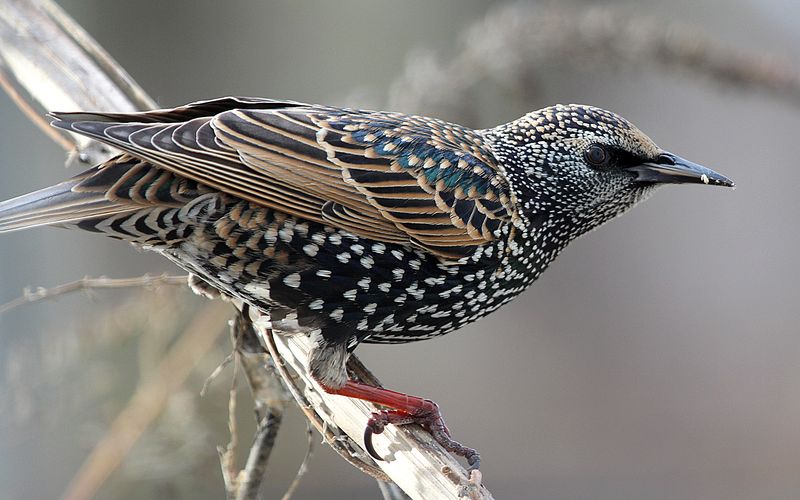
European Starlings are captivating with their shimmering plumage and mimicking abilities. These birds, introduced to North America, are often seen in large, synchronized flocks known as murmurations.
Although their adaptability is impressive, starlings can become invasive and outcompete native species. Maintaining ecological balance is crucial, and their natural habitat provides the space and resources they need.
Instead of keeping them as pets, providing nesting boxes and watching their acrobatic displays is a rewarding way to enjoy starlings. These methods support conservation efforts, ensuring that starlings remain a wild wonder.
Eastern Bluebird
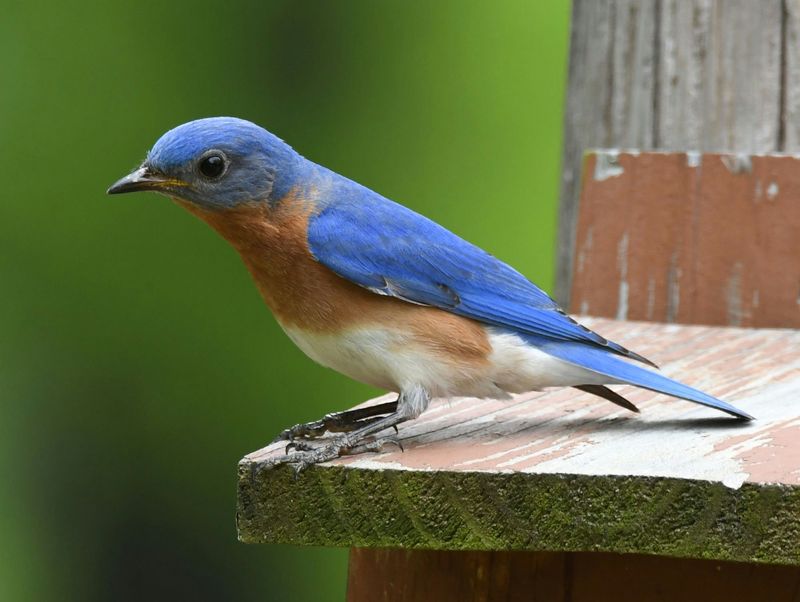
Eastern Bluebirds bring joy with their vibrant blue feathers and gentle demeanor. These small thrushes are often associated with happiness and are seen flitting through open fields and orchards.
Bluebirds require specific nesting conditions and diets that captivity can’t provide. By installing bluebird boxes in suitable areas, we can encourage their natural breeding behaviors. Observing bluebirds in their native environment allows them to thrive and brings us closer to nature.
Promoting a habitat rich in insects and berries helps sustain their populations, ensuring these delightful birds remain wild and free.
Barn Swallow
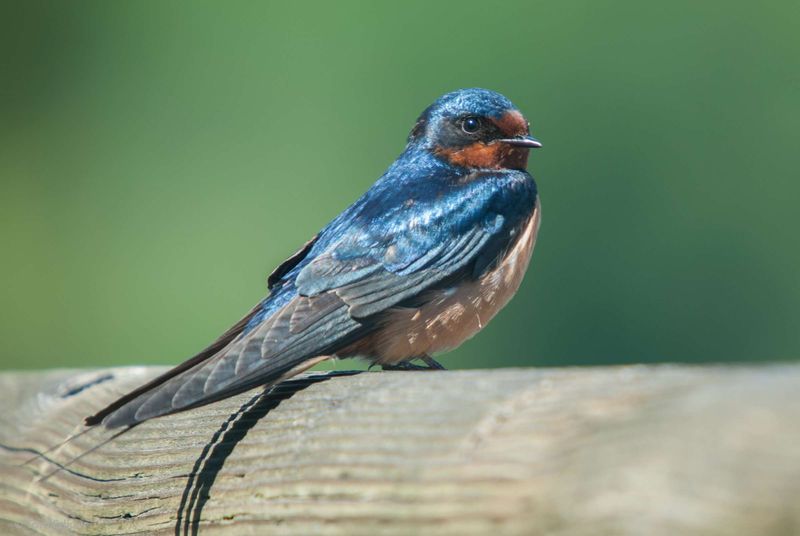
Barn Swallows are aerial acrobats, known for their swift, graceful flights and distinctive forked tails. They nest in barns and under bridges, consuming large quantities of insects, which benefits agriculture.
These birds are migratory, traveling thousands of miles each year, a journey that captivity would hinder. Providing open spaces and water sources encourages their presence during migration.
By safeguarding their migratory routes and nesting sites, we support their lifestyle and ecological role. Watching swallows darting through the sky brings a sense of freedom and joy that’s best experienced in the wild.
Northern Cardinal
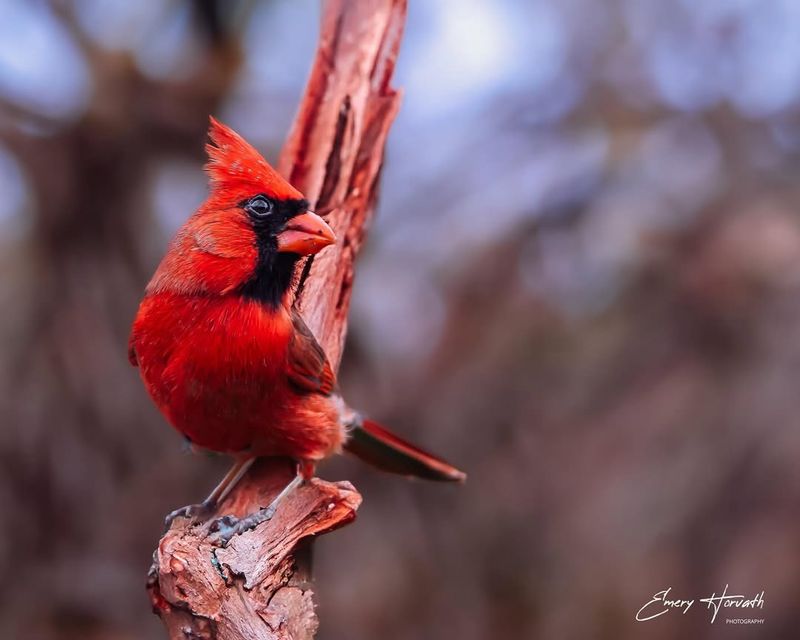
Northern Cardinals are striking with their vibrant red feathers and melodic songs. Often seen in pairs, they are a symbol of beauty and warmth in many backyards.
These birds thrive in natural environments where they can forage for seeds and insects. Captivity cannot replicate these conditions, affecting their wellbeing. Providing feeders with sunflower seeds and planting native shrubs can attract cardinals, allowing us to enjoy their presence naturally.
Creating a welcoming habitat ensures these lovely birds remain part of our outdoor experiences, enriching our gardens and lives.
House Finch
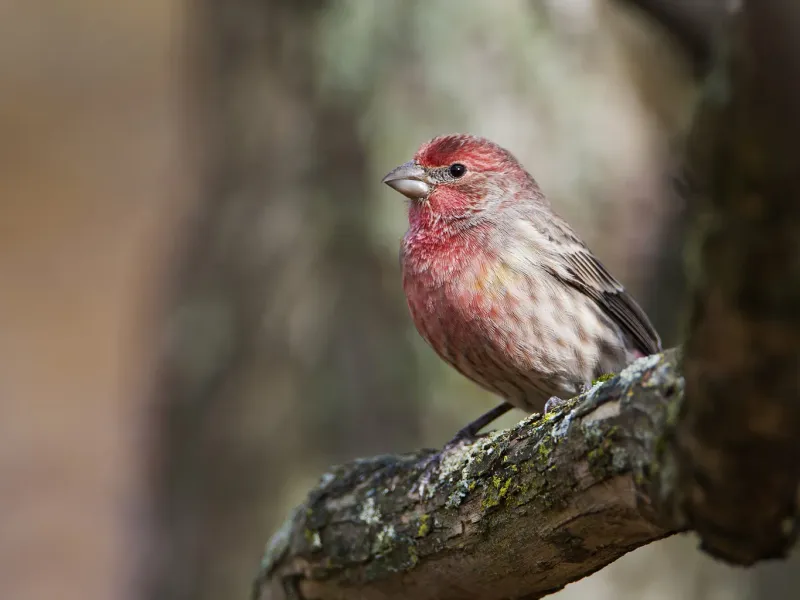
House Finches are social birds known for their cheerful songs and adaptability. They often frequent urban and suburban areas, adding a splash of color with their reddish plumage.
Though friendly, finches have intricate social structures that are disrupted in confinement. Observing them in the wild allows us to appreciate their natural behaviors and community dynamics.
Encouraging native plants and providing feeders with mixed seeds can attract these delightful singers to our yards. Such efforts support their natural lifestyle and contribute to the ecological balance, ensuring finches remain a joyful part of our environment.
Downy Woodpecker
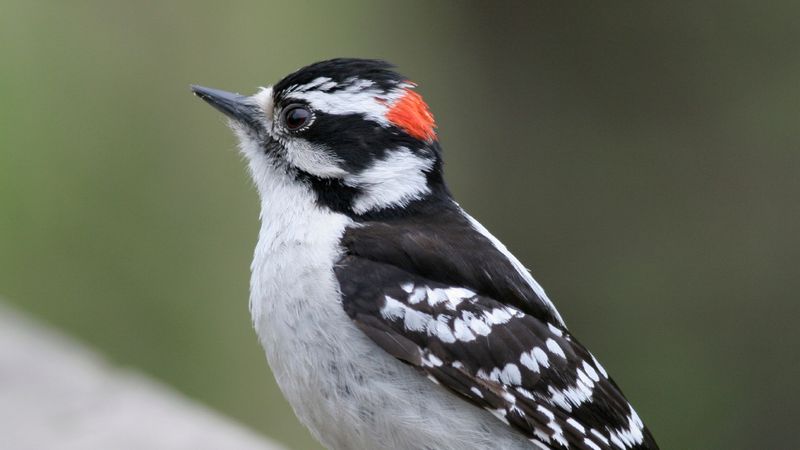
Downy Woodpeckers are charming with their black and white plumage and distinctive drumming sounds. These small woodpeckers are often seen in forests and gardens, searching for insects.
Their natural behavior includes pecking wood, a vital activity for feeding and communication, which captivity inhibits. Protecting wooded areas and providing dead trees for nesting supports their ecological role.
By observing them in their natural habitat, we gain insights into their fascinating behaviors. Encouraging their presence through conservation ensures these intriguing birds continue to thrive in the wild.
American Goldfinch
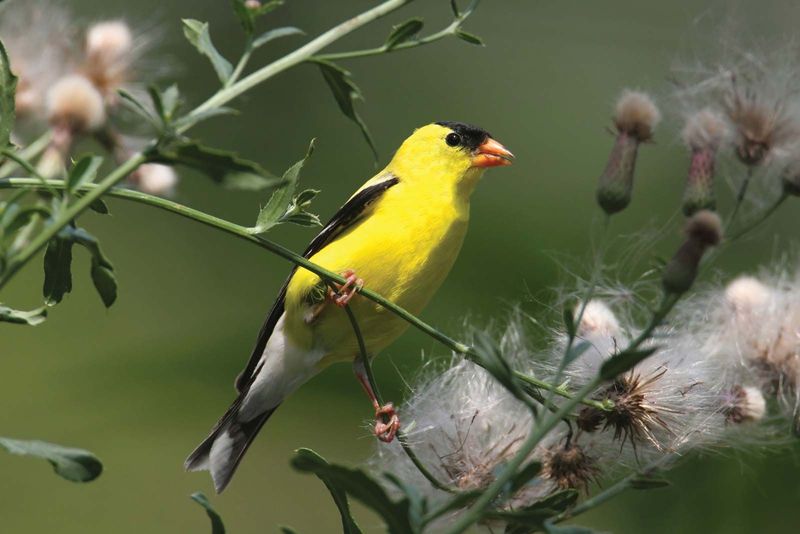
American Goldfinches are a delight with their bright yellow plumage and joyful songs. Found in open fields and gardens, they bring a touch of sunshine wherever they go.
These birds thrive on a diet of seeds, particularly thistles, which captivity struggles to provide adequately. Planting native thistles and asters supports their natural feeding habits.
Observing goldfinches in their natural environment allows us to appreciate their lively personalities and social interactions. By fostering habitats rich in their preferred seeds, we ensure these cheerful birds remain a vibrant part of our ecosystems.
Red-winged Blackbird
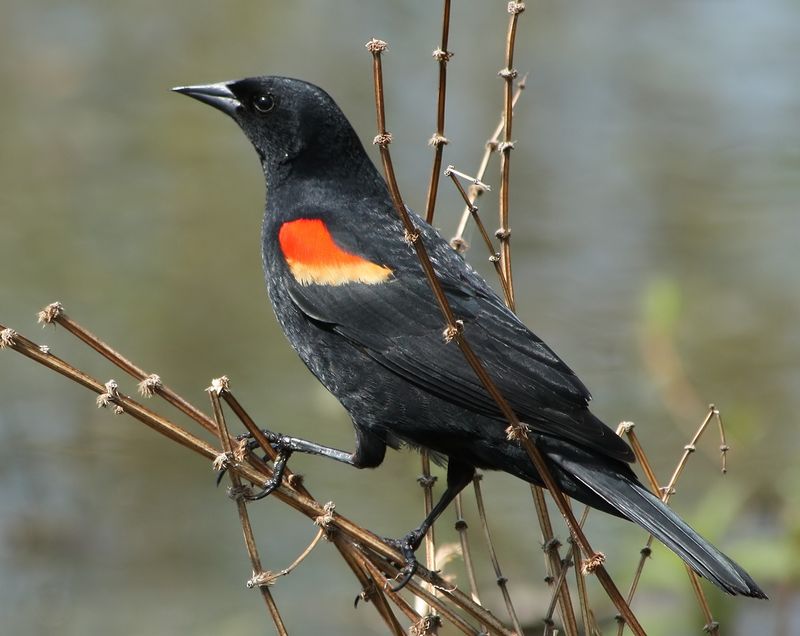
Red-winged Blackbirds are known for their striking shoulder patches and bold territorial calls. These birds are often found in wetlands, where they play a crucial role in the ecosystem.
Their natural habitats provide the specific conditions they require, from nesting sites to food sources. Keeping them as pets disrupts their important functions within their communities. Protecting wetlands and marshes supports their populations and ecological contributions.
By observing these birds in their native environments, we gain a deeper appreciation for their role and beauty. Encouraging conservation efforts ensures they continue to thrive naturally.
Song Sparrow
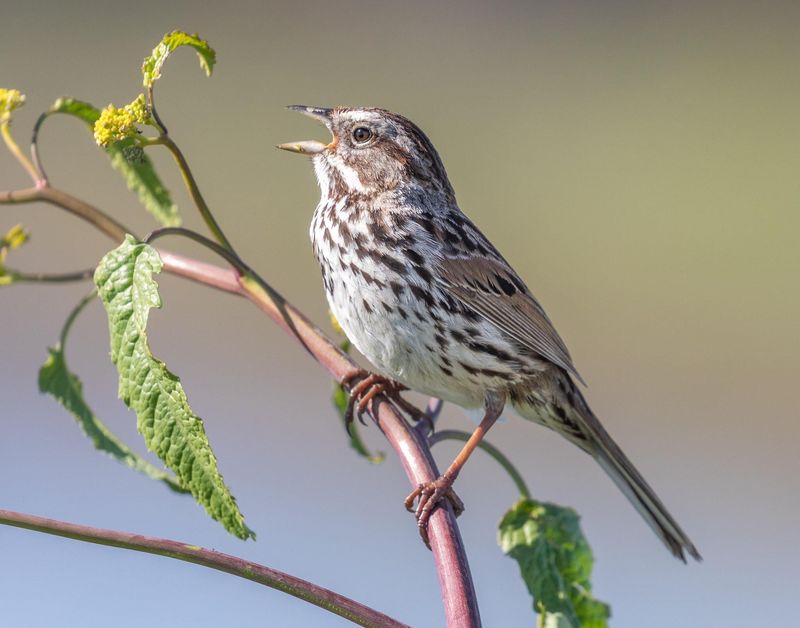
Song Sparrows are beloved for their melodious tunes and adaptability. Found across North America, they inhabit diverse environments, from gardens to marshes.
Their natural behavior and complex songs are best experienced in the wild. Captivity limits their ability to express these intricate behaviors. Supporting native plant growth and diverse habitats encourages their presence.
By fostering environments that mimic their natural homes, we allow song sparrows to contribute to the ecosystem. Observing their free-spirited songs provides joy and insight into the richness of avian life.
Cedar Waxwing
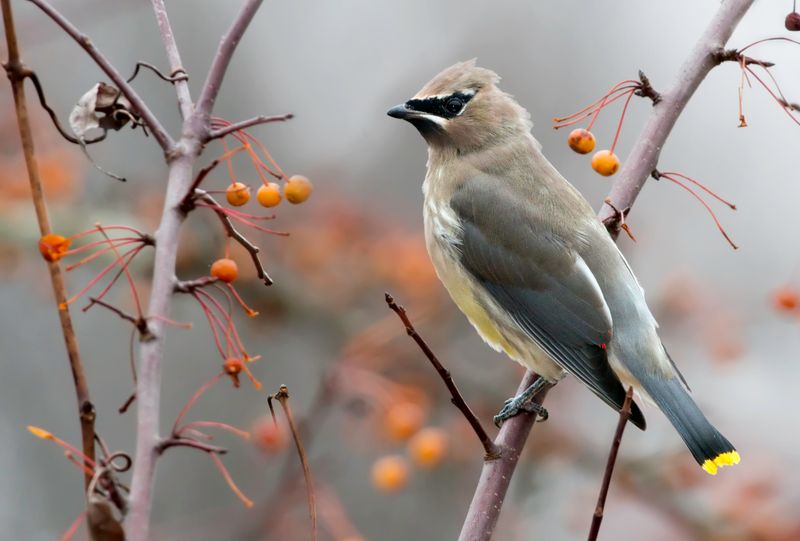
Cedar Waxwings captivate with their sleek, silky feathers and fondness for berries. Often seen in flocks, they travel through forests and woodlands, sharing their sociable nature.
Their diet and roaming lifestyle make captivity unsuitable. Planting berry bushes such as junipers and dogwoods attracts waxwings, allowing us to observe them naturally.
Encouraging these birds to visit our gardens or parks by maintaining berry-rich habitats supports their needs. This approach preserves their free-spirited essence, enriching our experiences with these beautiful creatures.
Mourning Dove
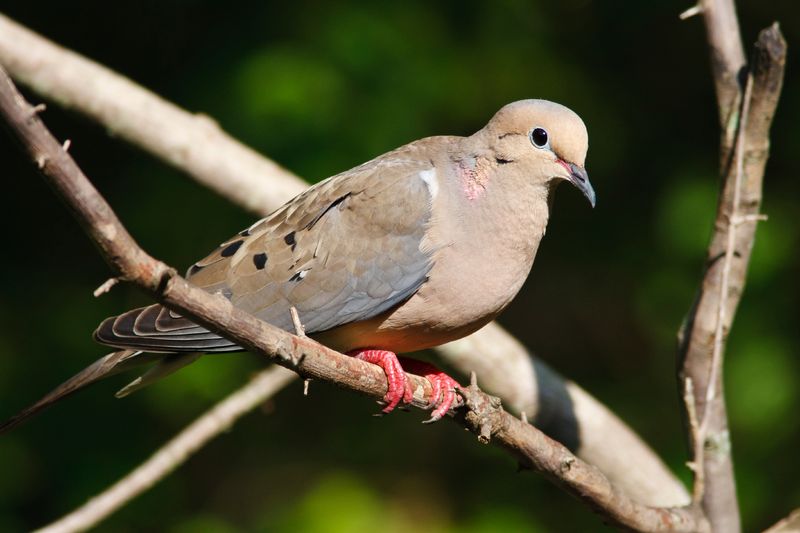
Mourning Doves are gentle birds known for their soothing coos and graceful flight. Common in urban and rural areas, they feed primarily on seeds scattered on the ground.
Their peaceful nature is best appreciated in open spaces where they can exhibit natural behaviors. Providing ground feeders and maintaining open areas encourages their presence.
By observing mourning doves in their preferred habitats, we respect their needs and contribute to their wellbeing. Their calming presence and soft calls enrich our environments, reminding us of the delicate balance of nature.
Baltimore Oriole
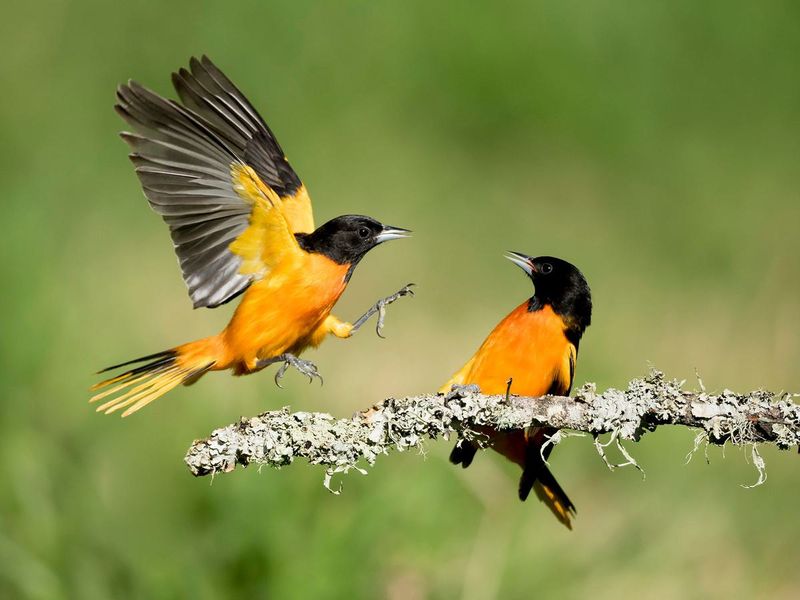
Baltimore Orioles dazzle with their bright orange and black plumage. Often seen in orchards and gardens, they are attracted to fruits and nectar.
These birds have specific dietary and migratory needs that captivity cannot meet. Planting fruit trees and offering nectar feeders support their natural lifestyle.
Observing orioles flitting through foliage brings vibrancy to our surroundings. Encouraging their presence through eco-friendly gardening practices ensures these stunning birds remain wild and engaging in their natural roles.
Great Blue Heron
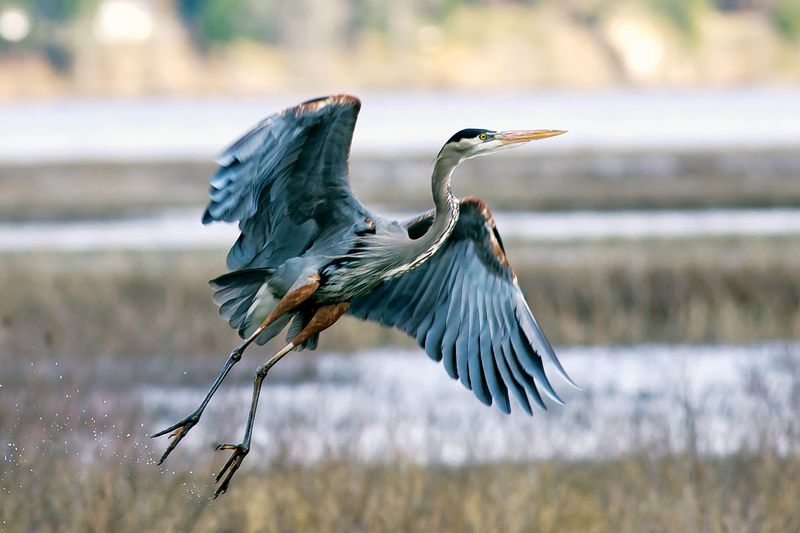
Great Blue Herons are majestic, often seen standing silently along water edges, fishing with patience and skill. These large waders inhabit wetlands and coastlines, contributing to aquatic ecosystems.
Their solitary nature and specialized hunting techniques require vast territories and abundant prey, making captivity unsuitable. Protecting wetlands ensures their survival and ecological contributions.
Observing herons in their natural habitats provides insights into their behaviors and the complex web of life they support. Encouraging conservation efforts ensures these elegant birds remain part of our natural world.
Pileated Woodpecker
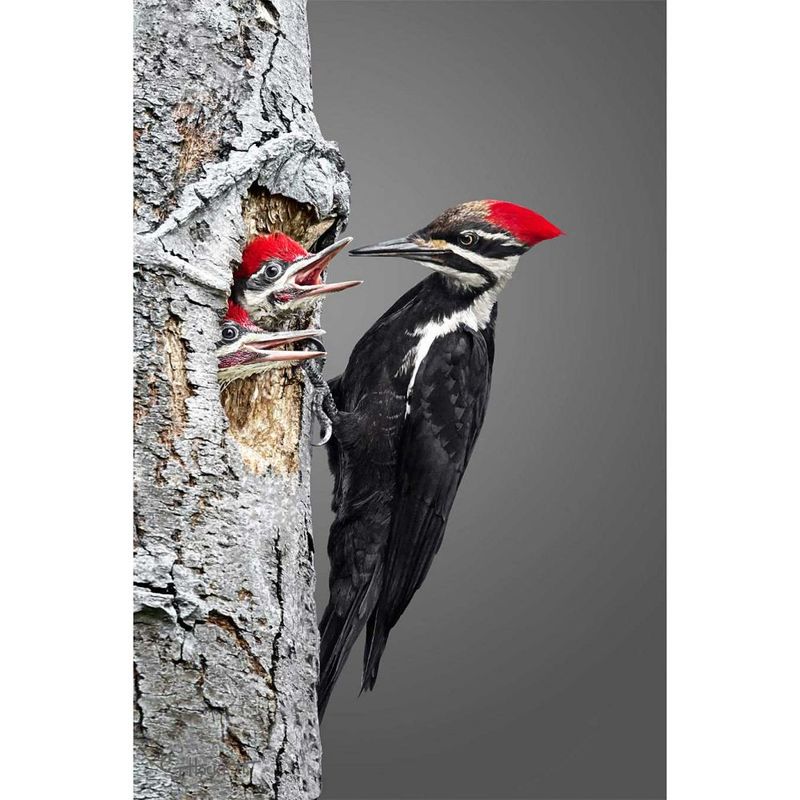
Pileated Woodpeckers are notable for their striking red crests and loud, resonant drumming. These large woodpeckers play a crucial role in forest ecosystems by controlling insect populations and creating habitats for other species.
Their need for large territories and dead trees for nesting and feeding cannot be met in captivity. Preserving mature forests supports their ecological role and natural behaviors.
By observing them in the wild, we witness the vibrant dynamics of forest life. Encouraging conservation of their habitats ensures these iconic woodpeckers thrive in their natural environments.

